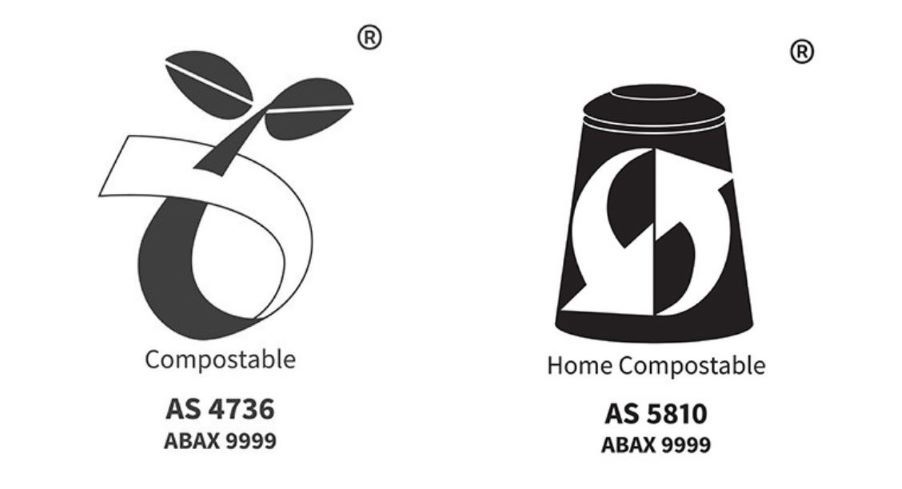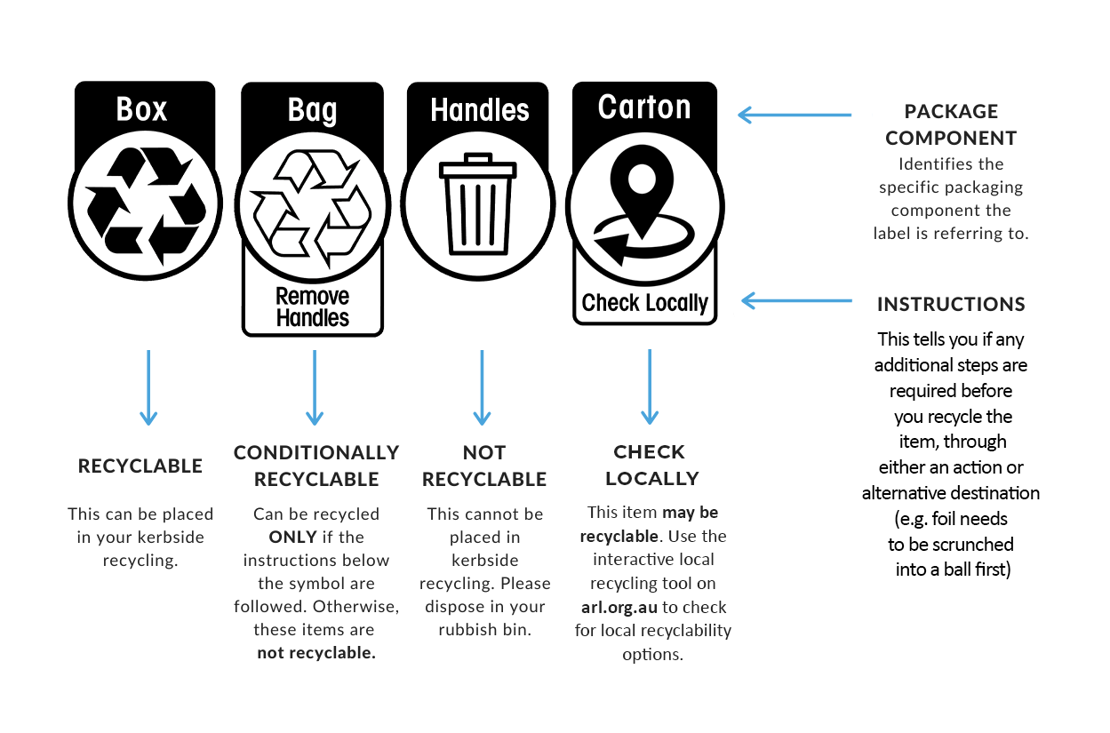Understanding packaging codes and labels
Symbols on packaging can be confusing. Some indicate what a product is made of, and some help you work out which part of a product can be recycled and which can’t. Understanding these codes and labels can help you maximise what you recycle.
If you’d rather not worry about codes and labels, we have summarised what can and can’t go into our recycling bins in our Guide to recycling bins and services.
Plastic codes
On most plastic containers and packaging you’ll find a symbol – a triangle formed by three arrows, with a number in the middle. Sometimes, there are letters underneath the symbol. This is called the Plastics Identification Code.
The symbol doesn’t necessarily mean the item can be recycled. Instead, the code shows the type of plastic that the product is made of. Only some types of plastic can be recycled in your yellow-lidded bin. Use this code as a guide to help you get plastic recycling right.
We accept hard plastic items made from codes 1, 2 and 5 only in mixed recycling. Read on to learn more.
Accepted in recycling
♳ 1 – PET or Polyethylene Terephthalate
PET is a clear, tough, solvent-resistant plastic. It can be recycled through your recycling bin. It’s usually found in:
- water bottles and soft drink
- detergent bottles
- condiment bottles.
♴ 2 – HDPE or High-Density Polyethylene
You can find HDPE in both rigid or hard and soft plastic forms. Only hard plastic items can be recycled through your recycling bin, such as:
- milk and juice bottles
- shampoo bottles
- cleaning product bottles
- storage containers.
In soft plastic form, HDPE is used for grocery bags, freezer bags and other plastic packaging. To dispose of soft plastics containing HDPE, place them in your garbage bin (red/dark green lid).
♷ 5 – PP or Polypropylene
We accept hard plastic items made from polypropylene in mixed recycling, such as:
- ice cream containers and lids
- yoghurt containers
- butter and margarine containers
- plastic takeaway containers.
Not accepted in recycling
♵ 3 – PVC or Polyvinyl Chloride
You can find PVC in both rigid or hard and soft plastic forms. But we do not accept any forms of PVC in our kerbside recycling. PVC is usually found in items like:
- plumbing pipes
- select cordial bottles
- furniture
- packaging.
Depending on the size and condition of such items, please do one of the following to dispose of these items:
- book a hard/green waste collection
- consult a specialist recycler like Terracycle
- consider donating the items to a second-hand store
- place them in your garbage bin (red/dark green lidded bin).
♶ 4 – LDPE or Low-Density Polyethylene
LDPE is thinner than 2 HDPE but often used for similar purposes. We do not accept any forms of LDPE in our kerbside recycling.
To dispose of these, place both hard and soft plastic items made from LDPE in your garbage bin (red/dark green lidded bin) or consult a specialist recycler like Terracycle to recycle these items.
♸ 6 – PS or Polystyrene
Products made from polystyrene are also widely known as styrofoam. Styrofoam is very light and breaks up into small pieces and contaminates the recycling stream.
These days, polystyrene is mostly used for packaging, such as:
- meat trays
- transportation packaging – to protect fragile items like TVs and other electronics.
The single use plastic ban has restricted the circulation of single-use items made from polystyrene, however, it can occasionally be found in:
- foam cups
- take away containers.
Polystyrene cannot be recycled through your recycling bin. To dispose of it, do one of the following:
- place these items in your garbage bin (red/green lidded bin)
- drop off at the Resource Recovery Centre where they’ll be sent to landfill
- use a specialist recycler like Terracycle to recycle these items.
♹ 7 – Other
‘Other’ includes items that are made with a mixture of plastic types. They cannot be recycled via your recycling bin, examples include:
- baby milk bottles
- CDs and DVDs
- sunglasses and safety glasses
Where accepted, consider dropping these items off at stores like Officeworks (for CDs). You may wish to also explore specialist recycling programs like Terracycle for these items.
Compostable packaging labels
In Australia, most bioplastics are classified as compostable, which means they’re made entirely from plants, and they’re designed to biodegrade under certain conditions.
These items are classified as either ‘industrially’ compostable or ‘home’ compostable and have the following symbols.

L: Industrially compostable R: Home compostable
How can I dispose of compostable packaging?
Because these items are made from plants, they can’t go in your recycling bin alongside other plastics. If they do, they can contaminate the recycling stream.
They also can’t go in a FOGO bin (food and garden organics). This is because they look too much like traditional plastic items – and the people inspecting our FOGO recycling may not be able to tell the difference.
Follow these instructions to dispose of compostable packaging:
- For ‘industrially compostable’ place in a garbage bin – it will eventually break down in a landfill.
- For ‘home compostable’ items, you can:
- place in your our home compost bin or
- throw it in your garbage bin or a public place garbage bin.
Never place compostable items in a FOGO bin. There is only one exception to this rule and that’s kitchen caddy liners for FOGO recycling. Certified compostable caddy liners are permitted by our processor.
If something is labelled only as ‘biodegradable’, put it in your regular garbage bin only – as it might contain regular plastic, which can harm the environment.
The Australasian Recycling Label (ARL)
A product may come in several packaging parts. This Australasian Recycling label system was developed to tell you what to do with each part.
Recycling rules vary slightly from state to state and from Council to Council. But the Australasian Recycling Label is a great starting point if you’re confused about what to do with an item that has many parts.
The label identifies each packaging part and then underneath shows four different sets of instructions. For example:
- The solid recycling symbol: recyclable – place in your recycling bin.
- Transparent recycling symbol: conditionally recyclable. An example of this might be a paper bag that has soft plastic handles. If the handles are removed, then the item is recyclable.
- Bin symbol: place in your garbage bin.
- Check locally symbol: The geotag symbol means that this item may be recyclable. Depending on the item, you can find out by:
- using information contained within this web page or our Guide to recycling bins and services or
- you can use the ARL interactive local recycling tool to check recyclability options in your area. If there are no local options available, you will be prompted to place the item in the general waste bin.

Source: Australasian Recycling Label (ARL) - Planet Ark Recycling Near You , visited 18 April 2024